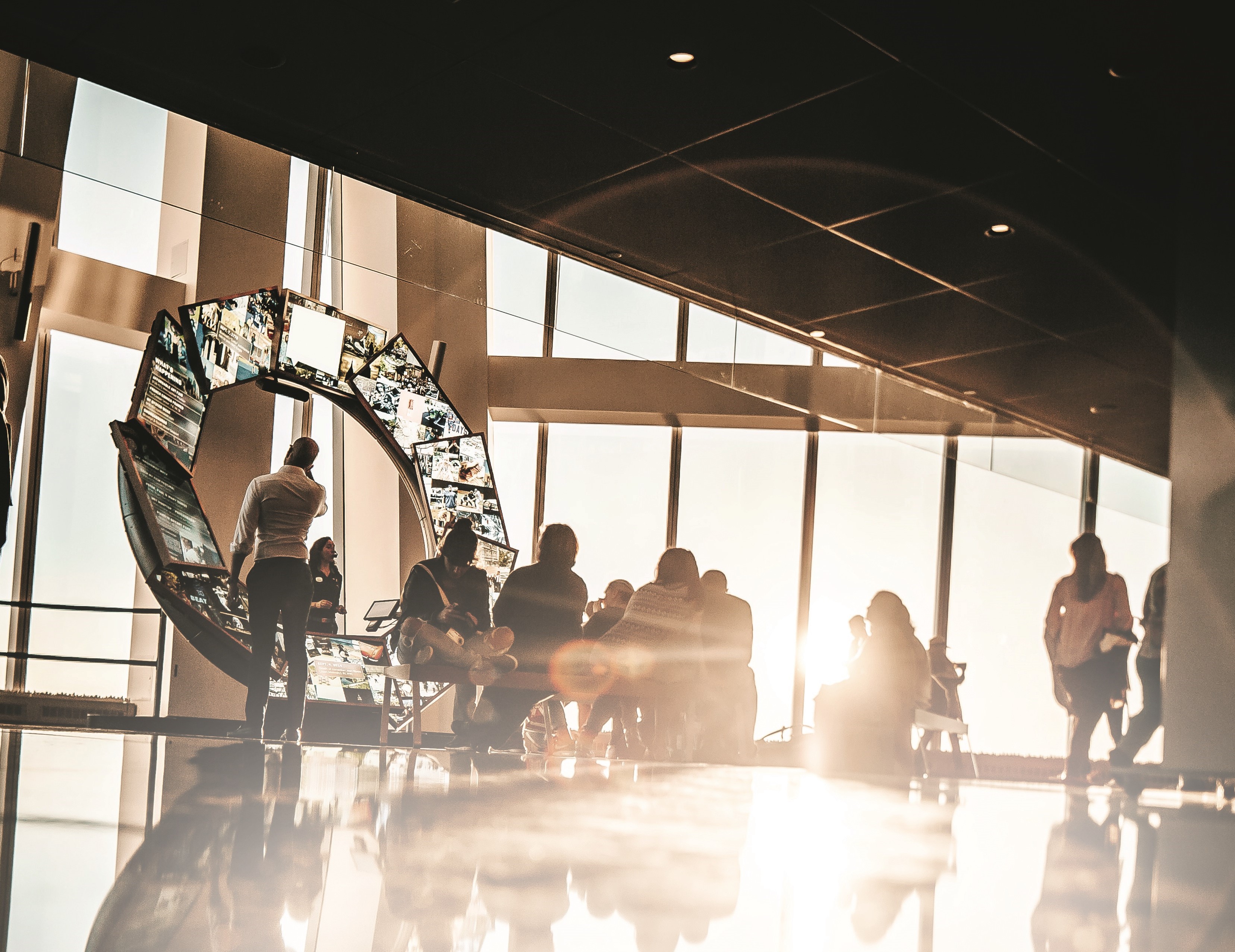The changing nature of work is in turn redefining the role of the office. Previously a space in which to concentrate on tasks for the day, it is now primarily a space for interaction with colleagues and clients to exchange ideas. In this report, we speak to architects and companies behind high-profile office developments to understand current work trends and how they are influencing a company’s approach to employees and office design. We explore the concept of flexibility on three fronts: flexible working practices, flexible workspaces for cross-functional collaboration and flexible office design to respond quickly to a rapidly changing work environment. Much attention in the media is given to examples of technology companies, but we have chosen to shine a spotlight on a range of sectors beyond technology.
KEY FINDINGS OF THE REPORT
- Changing patterns of work are prompting companies to see workplace design as a way to attract talent. As companies compete for talent, they are focusing on making their offices an “exciting place to work” to draw people in. Offices are being designed to include large, open spaces for collaborative working and leisure facilities such as gardens, game rooms and gyms. Many firms that have included these on their properties have experienced an uptick in office attendance. Companies are also attracting a new set of skills in response to technological advances and are developing a working environment to match - they are adapting their HR policies and even turning to coworking spaces to house employees.
- There is a strong consensus on the need for a mix of spaces—open areas for collaboration as well as quiet spaces for concentrated work. Companies are responding to the flaws of open plan offices, to counter the danger of distractions. They are creating office spaces with roof terraces and cafés for chance encounters as well as atriums with glass-enclosed pods for private work. “If everyone is encountering each other all the time, you get a sort of group think, which is the opposite of creative and different,” says Simon Allford, director at Allford Hall Monaghan Morris, an architecture firm. The onus is on the company to create settings to strike this balance.
- Foot traffic, not headcount, is emerging as the key metric for office space usage. Remote working and mobile working within the office are making it hard to predict the number of people that will be present at the office at any given time and, thus, the amount of space required. As a result, office space usage is increasingly being measured by footfall in a given space. Companies are piloting sensors that monitor how much a space is used. The information helps identify areas of heavy traffic or those that are underused, so that the office layout can be altered accordingly.
- Data privacy and cybersecurity are now key considerations in office design. As data on employee presence and movements around the office are collected, through the increasing use of smart technologies, there is an ongoing discussion on striking a balance between securing information to improve office efficiency and employee privacy. Employee concerns may be allayed to a certain extent if it is communicated that these metrics are not used in performance evaluation. Intimate data collected on employees are also susceptible to cyberattacks, thus cybersecurity is a growing concern.
- Companies are paying attention to health and wellbeing standards for offices. In response to a growing emphasis on health and wellbeing in the workplace, companies are ensuring their offices meet benchmarks such as the WELL Building Standard. It assesses a building’s impact on health and wellbeing, focusing on seven categories of building performance: air, water, nourishment, light, fitness, comfort and mind (cognitive and emotional health). Initial results show an improvement not just in health and wellbeing but overall employee performance as well.
- Innovative office spaces are being used to engage clients. Companies have created interactive spaces at their offices to host clients and better demonstrate their capabilities and reinforce their brand. These range from supermarket sets at consumer goods companies to “digital experience” studios at management consultancies.
- Office design and corporate policies must be responsive to the speed of change. The pace of adoption of the latest workplace technologies, including artificial intelligence (AI), will influence future organisation size, structures and operations. “If I’m asked what people’s jobs will be in two years’ time, I don’t know, and neither do they,” says Leena Nair, chief HR officer at Unilever. Office design must therefore be responsive and can include elements such as wall systems that can be reconfigured within a day, 3D printed office sections and sharing spaces, enabling dynamic companies to change their office layout periodically as organisational structures evolve. Ongoing training programmes can help upgrade staff skills in desired areas of expertise.





